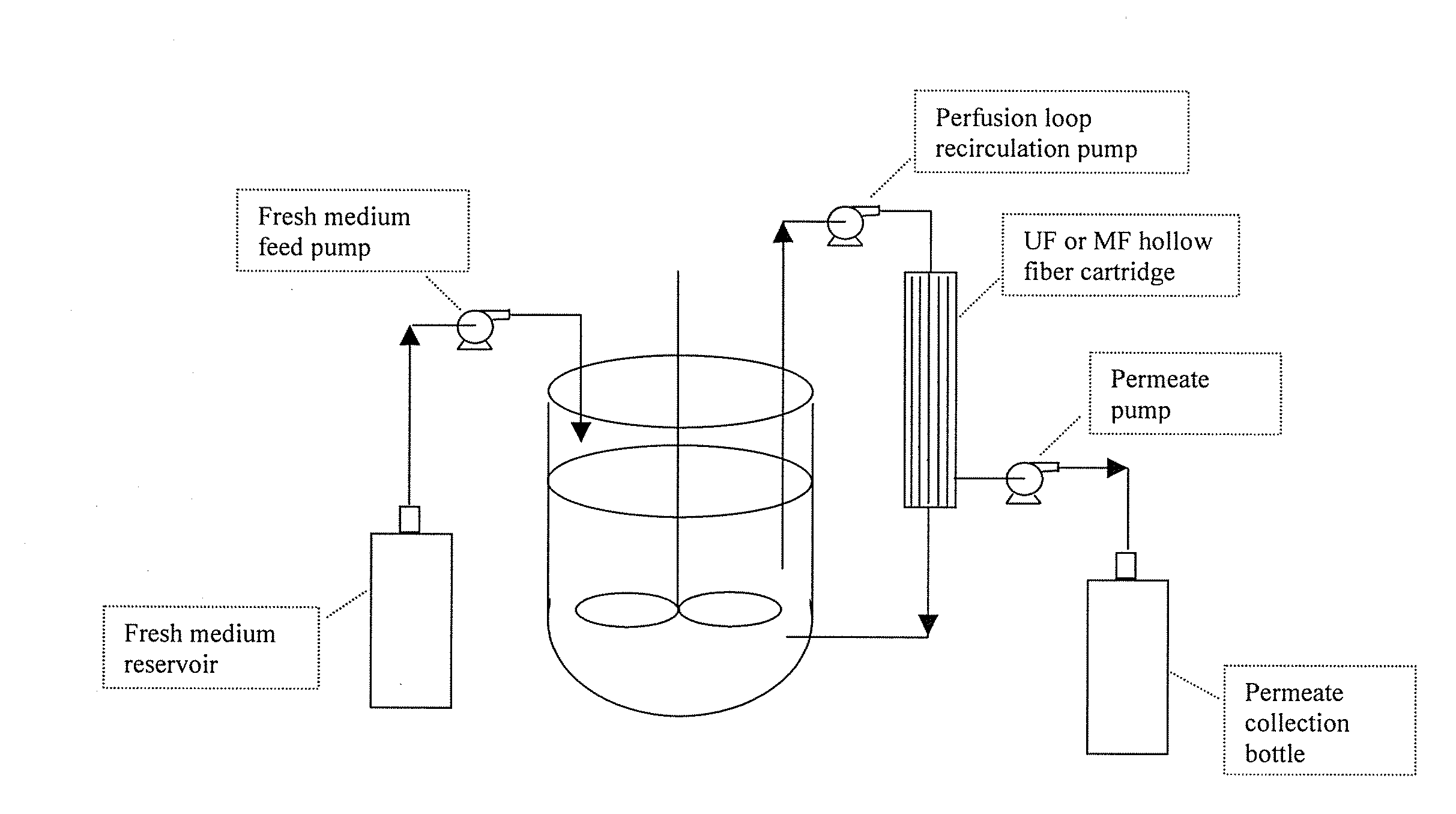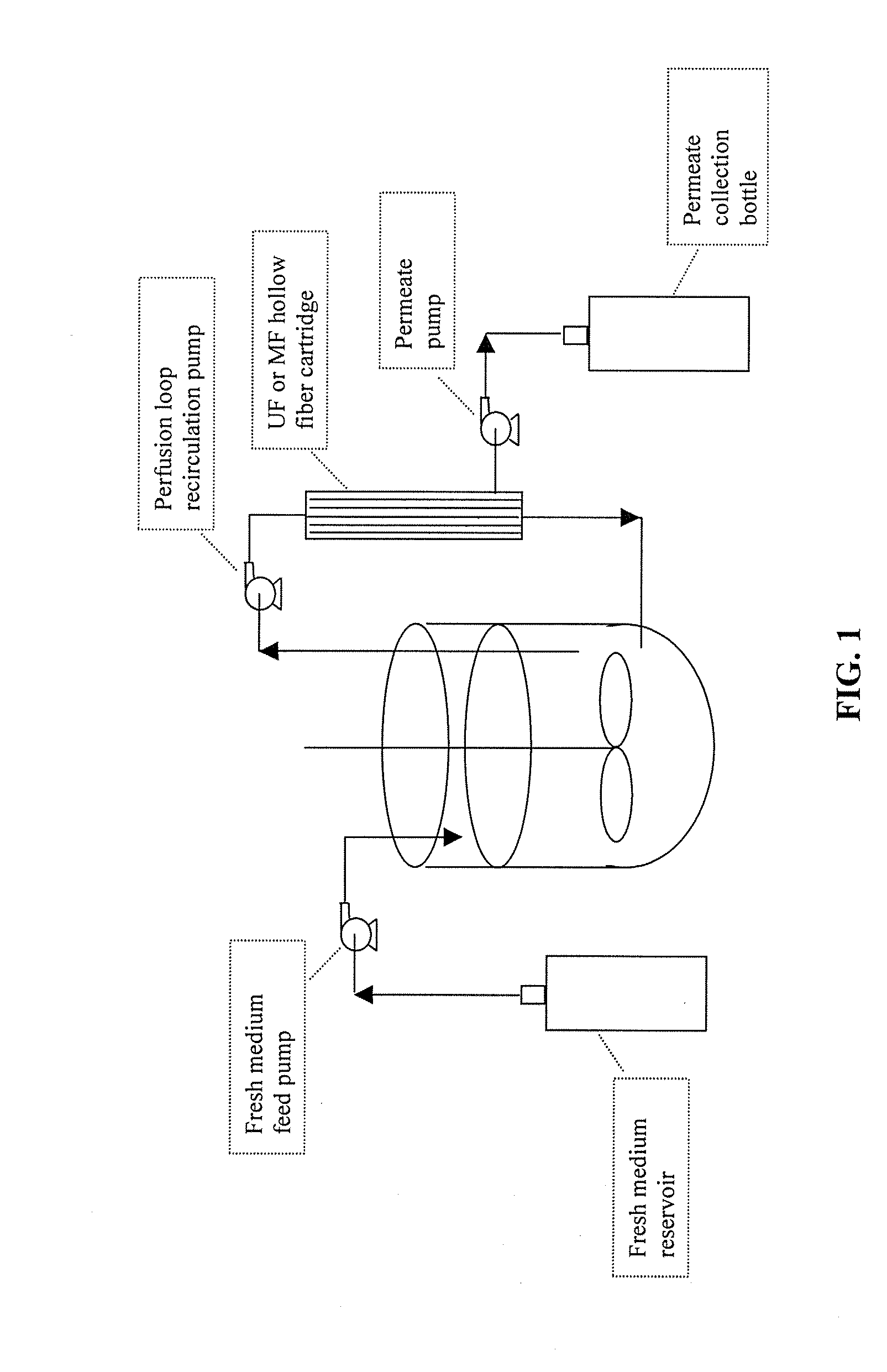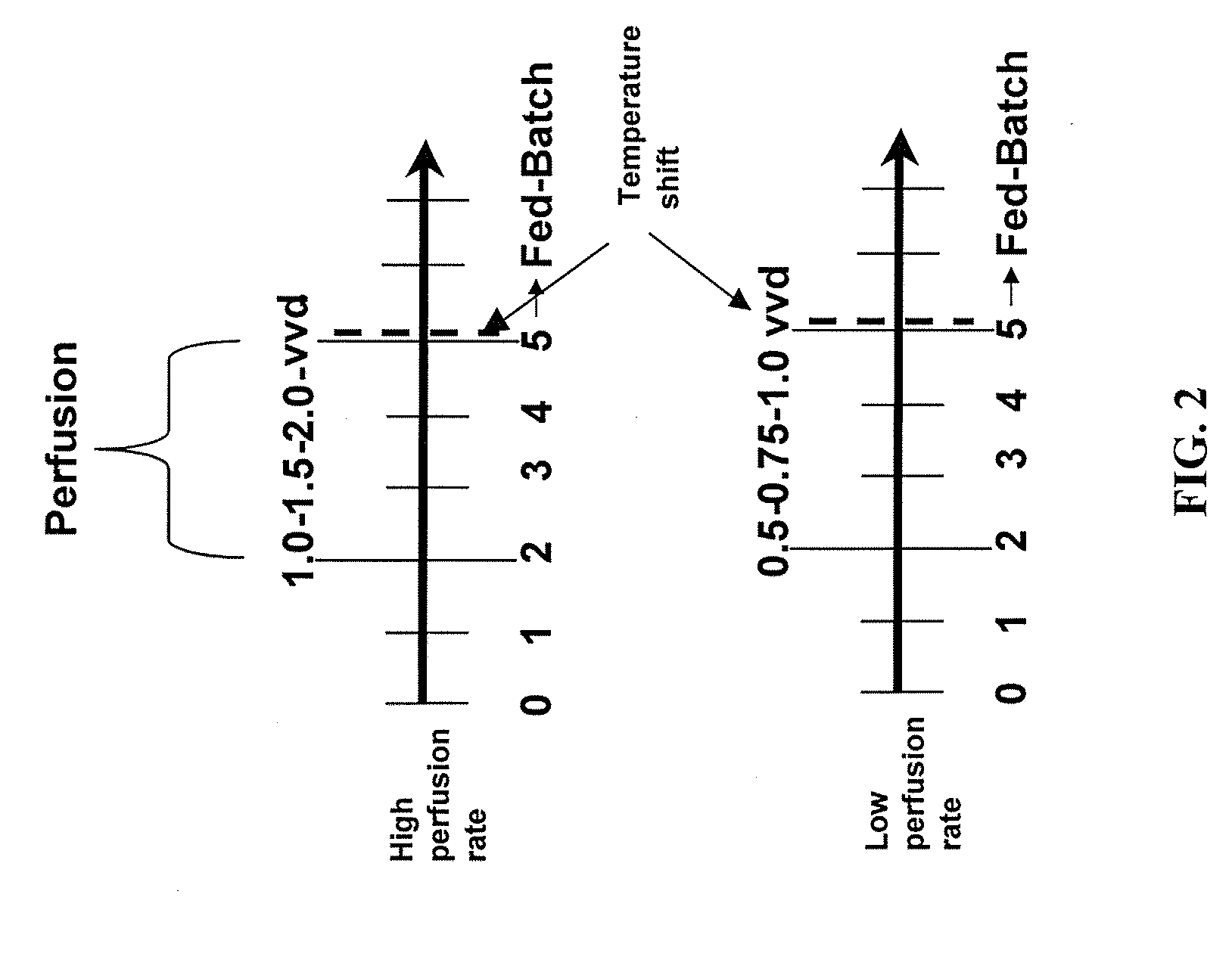Use of perfusion to enhance production of fed-batch cell culture in bioreactors
a cell culture and perfusion technology, applied in the field of improving the protein production of cultured cells, can solve the problems of low viability, low production yield of animal cell cultures, and low production rate of animal cell cultures
- Summary
- Abstract
- Description
- Claims
- Application Information
AI Technical Summary
Benefits of technology
Problems solved by technology
Method used
Image
Examples
example 1
Setup of a Perfusion Bioreactor Apparatus
[0086]An exemplary bioreactor apparatus of the invention is illustrated in FIG. 1. A stirred-tank bioreactor has an external recirculation loop installed with an MF or UF hollow fiber cartridge filter plumbed inline. The perfusion loop recirculation pump continuously removes cell-containing medium from the bioreactor, pumps it through the tube side of the hollow fiber device, and returns the medium with slightly concentrated cells to the bioreactor. A feed pump delivers fresh medium to the bioreactor and a permeate pump removes cell-free permeate from the shell side of the hollow fiber cartridge filter, maintaining the volume of the bioreactor at an approximately constant level. Depending upon the process, the permeate may contain product that could be captured for purification. The flow rate through the recirculation loop is many times that of the rate at which medium is drawn off by the permeate pump.
example 2
Modified Fed-Batch Process
Example 2.1
Materials and Methods
[0087]A Chinese hamster ovary cell line (CHO-K1), producing a humanized anti-IL-22 monoclonal antibody, was used in the culture experiments. Medium based on at least one formulation included in U.S. Patent Application Publication No. 2006 / 0121568 was used as perfusion medium in Examples 2.2 and 2.3 (“normal medium” or the like). In Example 2.4, the medium of Examples 2.2 and 2.3 was used for one bioreactor, whereas an additional bioreactor used a nutrient-enriched variant thereof, i.e., medium that was more highly enriched in amino acids and vitamins (“more concentrated medium” or the like). The fed-batch culture portions of the bioreactor experiments also used such media and / or variants thereof. Three-liter (2-liter working volume) Applikon (Foster City, Calif.) bioreactors with automated controllers (Applikon BioController 1010) were outfitted with external perfusion loops consisting of microfiltration (Spectrum Laboratorie...
example 2.2
Modified Fed-Batch Process with Microfiltration Device
[0088]These experiments investigated the use of continuous perfusion for a relatively short-term followed by fed-batch culture, and used a scheme of stepwise increases in the perfusion rate starting on day 2 of the initial cell culture. The medium used for perfusion was the same medium that was used for the initial inoculation. For experiments labeled ‘high perfusion rate’ the perfusion of the bioreactor was started at 1 reactor volume per day of perfusion (vvd) on day 2, ramped up to 1.5 vvd the following day, and finally to 2 vvd on day 4, for an additional 24 hours (see FIG. 2). At this point, i.e., day 5, the perfusion was stopped, the recirculation through the recirculation loop containing the microfiltration device (hollow fiber 0.2 micron pore size filter) was stopped, and any cells still in the recirculation loop were lost as the recirculation loop was clamped off from the cells in the bioreactor. In other experiments, th...
PUM
| Property | Measurement | Unit |
|---|---|---|
| Temperature | aaaaa | aaaaa |
| Temperature | aaaaa | aaaaa |
| Time | aaaaa | aaaaa |
Abstract
Description
Claims
Application Information
 Login to View More
Login to View More - R&D
- Intellectual Property
- Life Sciences
- Materials
- Tech Scout
- Unparalleled Data Quality
- Higher Quality Content
- 60% Fewer Hallucinations
Browse by: Latest US Patents, China's latest patents, Technical Efficacy Thesaurus, Application Domain, Technology Topic, Popular Technical Reports.
© 2025 PatSnap. All rights reserved.Legal|Privacy policy|Modern Slavery Act Transparency Statement|Sitemap|About US| Contact US: help@patsnap.com



